Comet C/2013 X1 PANSTARRS was discovered by the University of Hawai'i's automated Pan-STARRS 1 (Panoramic Survey Telescope & Rapid Response System) on 4 December 2013.
It reached perihelion on 2 April 2016, and over a period of months many comet chasers and astrophotographers observed and imaged the celestial body in the night sky over Earth.
The image below shows Comet C/2013 X1 PANSTARRS in a conjunction with open star cluster Messier 34, and was captured by Bill McSorely in November 2015 from Leeds in the UK.
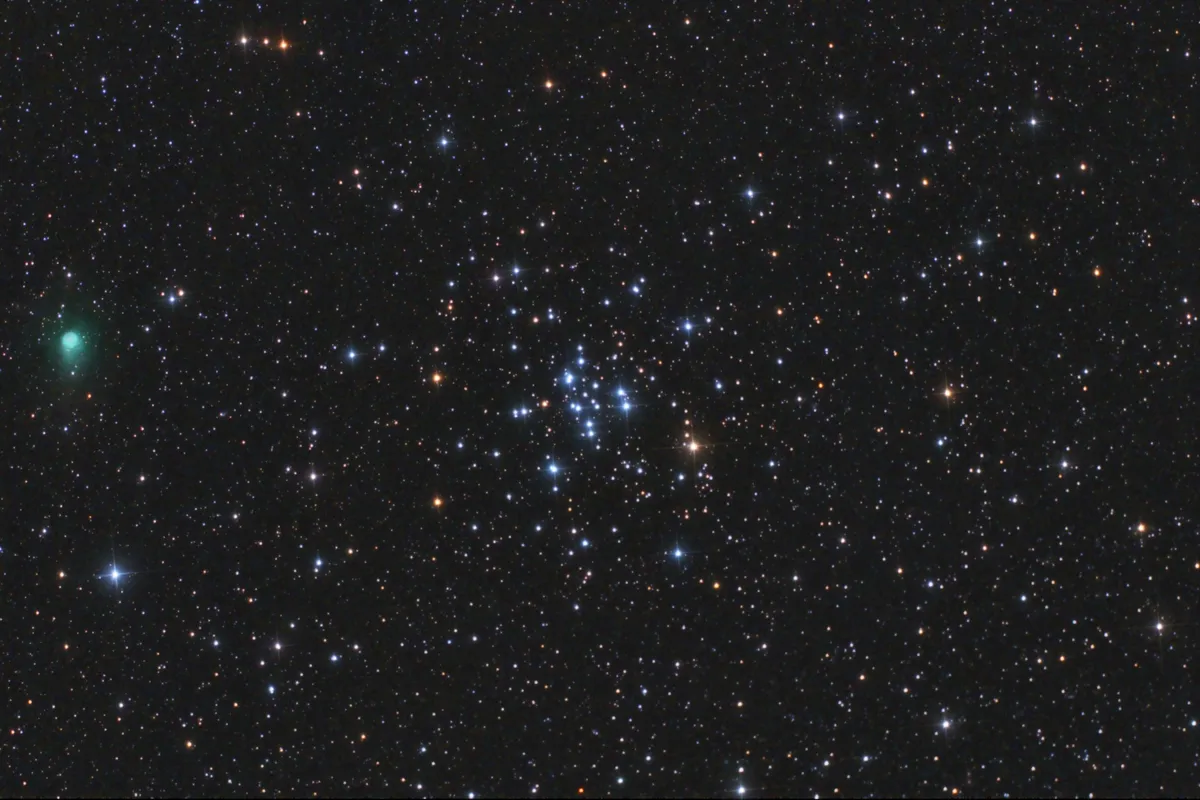
One person who really showed a lot of skill and dedication to observing and photographing C/2013 X1 PANSTARRS, however, was comet-chaser José J. Chambo, who took the opportunity to image it over several months, recording its change in appearance as he did so.
José captured the below image from Valencia, Spain on 9 January 2016, showing C/2013 X1 (PANSTARRS) at mag. +8 and with a coma 11 arcminutes in diameter.
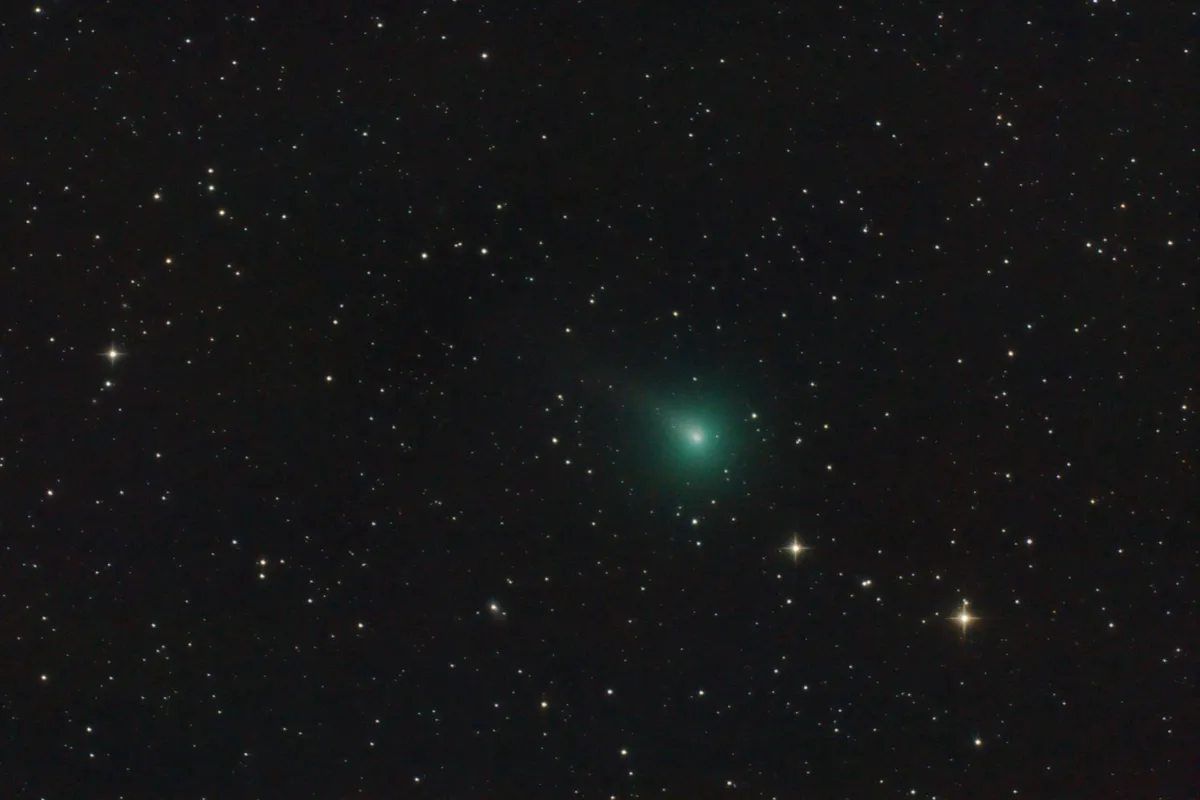
Then on 11 May 2016, José captued the image below from Siding Spring Observatory in Australia.
He said: "In spite of bad weather, high humidity and poor transparency, it's possible to see the comet's two tails in the image, the dust tail toward upper left at more than half a degree and the ion tail below right, which shows several jets.
"Although faint, it can be seen stretching at least a couple of degrees to mag. +4 star Phi Aquarii.
"The comet has a brightness of mag. +7 and will be increasing in brightness over the coming days as it approaches Earth."
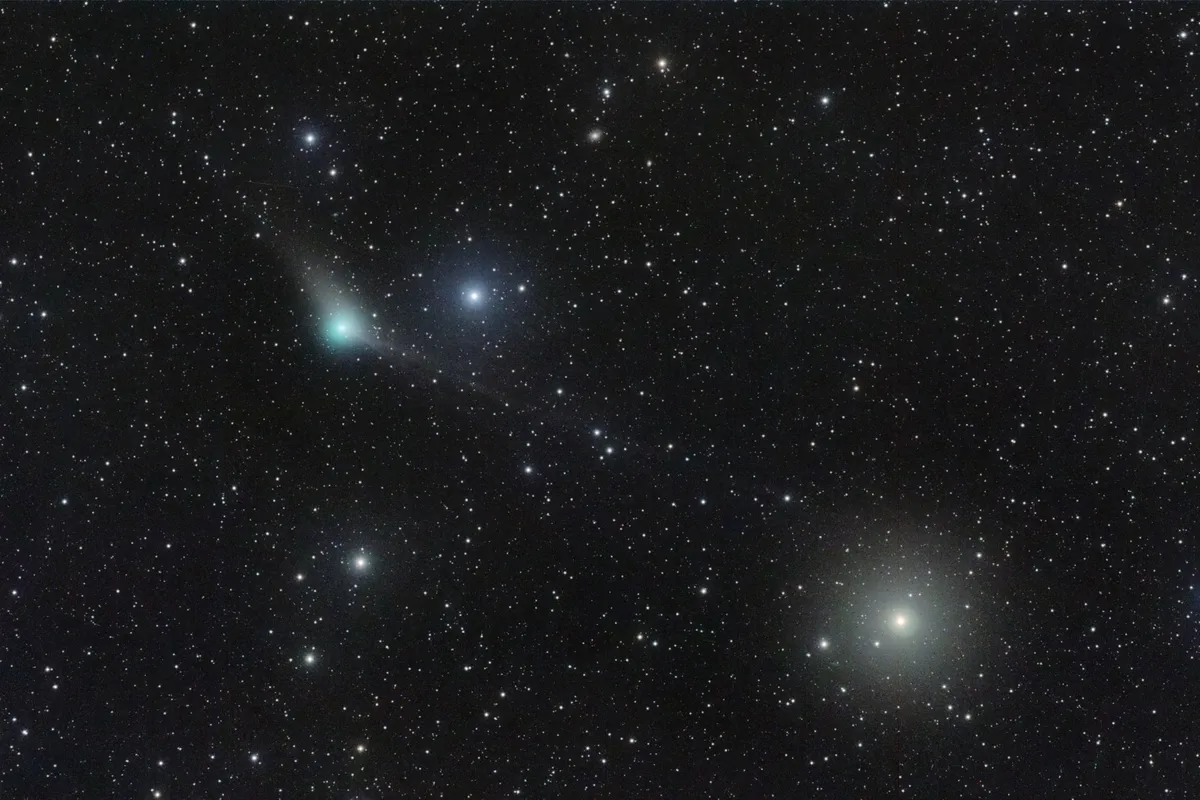
José's next image was captured on 18 May 2016.
He said: "The comet is now located in the constellation Aquarius and is observable through binoculars before dawn."

José's next image was captured on 12 June 2016, just 10 days before the comet's maximum approach to Earth and displaying a mag. +6.5 brightness.
José said: "In this wide field image you can see a greenish coma with an apparent diameter as big as the Moon.
Towards upper left can be seen a dust trail (type III) more than a degree long, as well as a long and narrow ionic tail very faintly towards right.
You can also see the beginning of its classical dust tail (type II), projected only a few arcminutes towards upper right.
"The brightest star in the field is mag. +4 Iota Piscis Austrini while near the lower right corner you can see a small and faint interstellar cloud associated with infrared emission source IRAS F21276-3327."
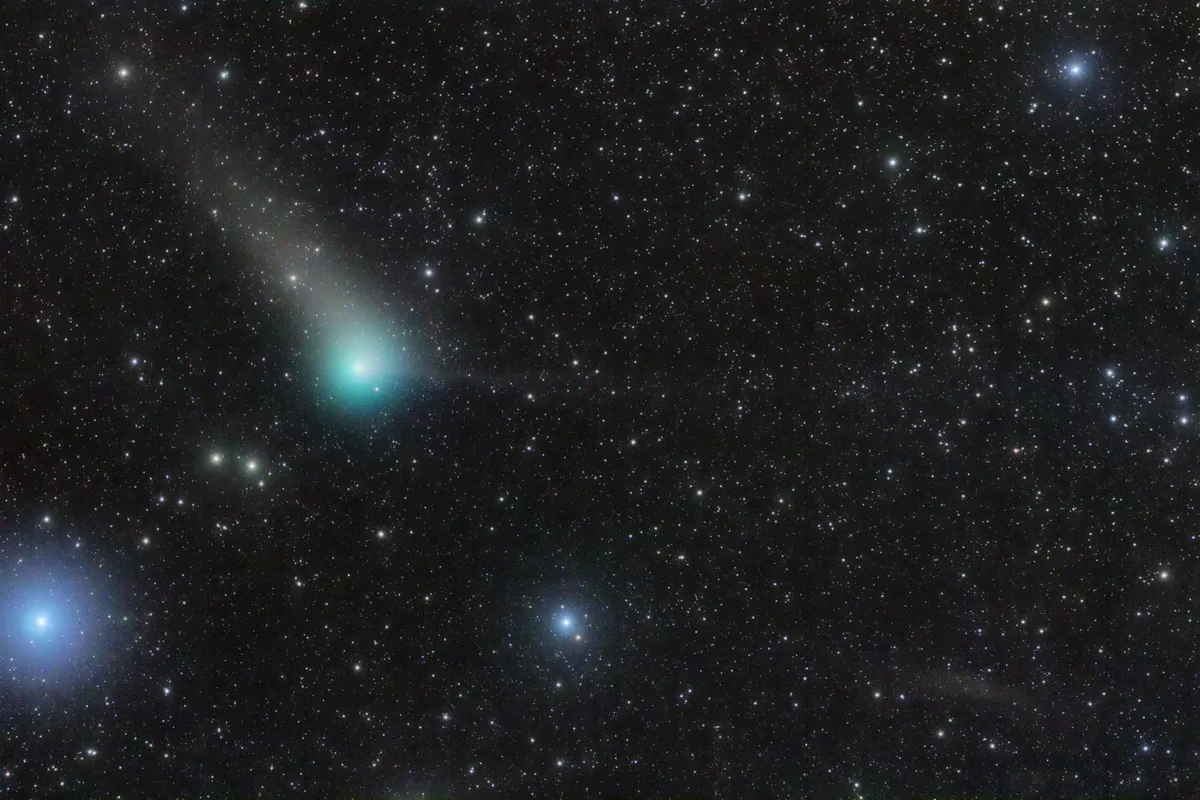
Then on 30 June 2016 José captured the below image of Comet C/2013 X1 (PANSTARRS) a week after its maximum approach to Earth, as it began to move away towards the outer Solar System.
José said: "The comet suddenly has lost its ion tail, and all that remains is the dust trail behind its direction of orbit (tail type III).
"In this wide field image the comet appears above a dense zone of the Milky Way between constellations Scorpius and Ara with its tail projected towards the globular cluster NGC 6352.
"The brightest star at the top of the image is Iota Arae. Below left you can see the glow of mag. +2.8 star Alpha Arae."
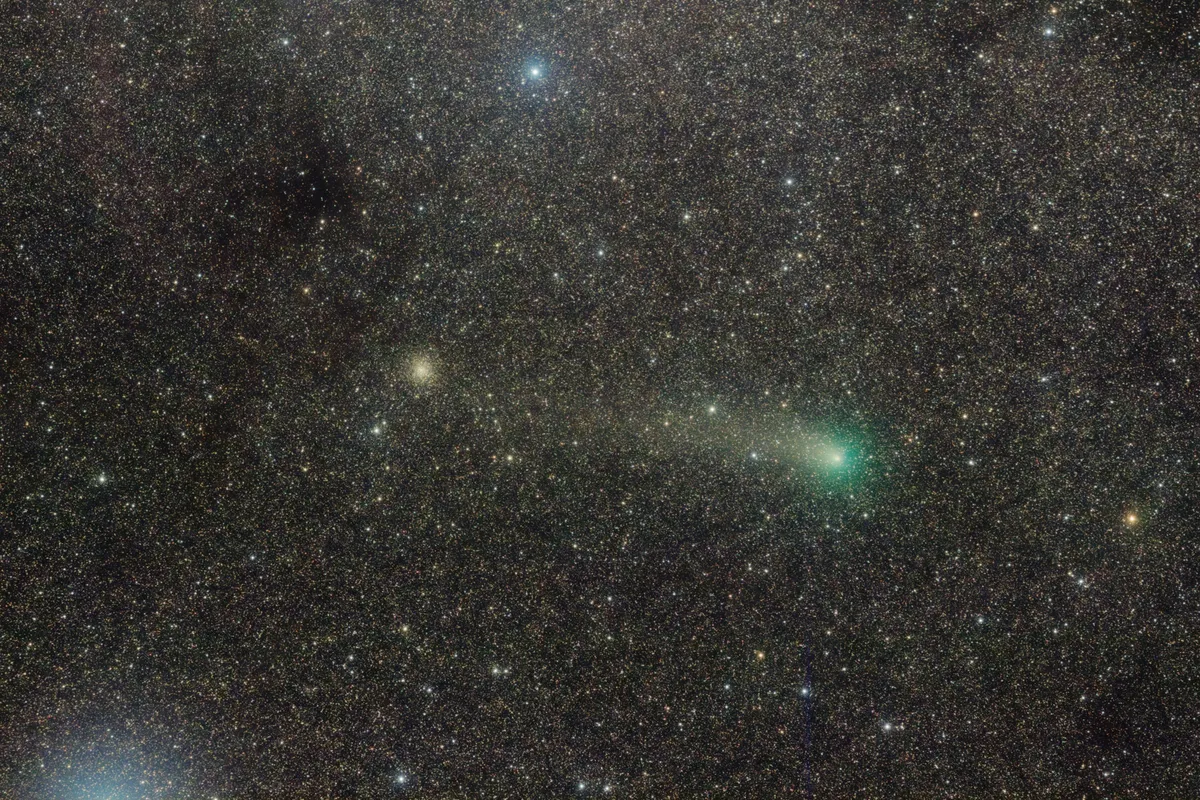
José's penultimate image of the comet was captured on 25 July 2016.
He said: "The comet is now displaying a tail formed from a narrow and long trail of dust. It's very sharp because our planet is intersecting the orbital plane of the comet and we see its projection of dust particles edge-on.
"Its head glows a strong greenish colour due to the emission of C2 molecules.
"In this widefield image the tail is more than a degree long (two times the apparent diameter of the full Moon), before it merges with the glow of a beautiful couple of bright stars in Centaurus: at right the reddish mag. +4 C01, and left the bluish mag. +5 C02."

On 26 August 2016, José captured his last image ofComet C/2013 X1 (PANSTARRS).
He said: "The comet was visible with binoculars a few months ago. In this image it is definitively moving away from the inner Solar System and quickly losing its brightness.
"Despite this, this was image taken with a high sensibility remote equipment from Siding Spring Observatory in Australia, and so it shows the comet's faint dust trail extending 1 degree long (as wide as two full Moons), while its head glows green due to the emission of carbonic gas.
"Along with several tiny galaxies scattered across the field, at bottom right can be seen barred spiral galaxy NGC 5556, which was discovered by John Herschel in 1834."

Thanks to José for sending in his images and his reports of Comet C/2013 X1 PANSTARRS.
For more of José's work, be sure to check out his Astrobin page.
You can also read similar reports by José on Comet C/2013 US10 Catalina, Comet C/2017 O1 ASASSN and Comet C/2015 V2 Johnson.